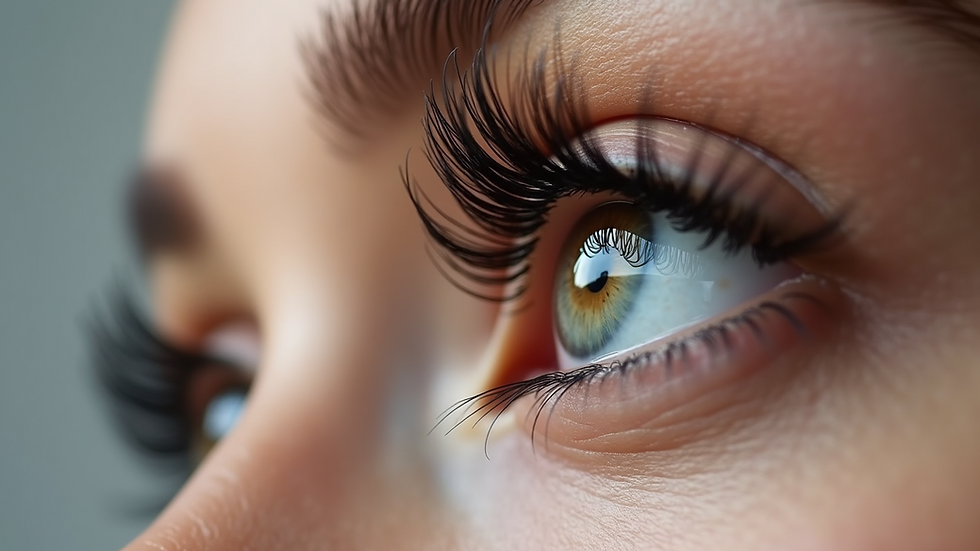Understanding the Basics of Permanent Makeup
- browboutiqueuk
- 4 days ago
- 4 min read
Permanent makeup has become a popular beauty solution for many people looking to enhance their natural features with long-lasting results. This technique offers a way to save time on daily makeup routines and maintain a polished look throughout the day. In this article, we will explore the fundamentals of permanent makeup, its benefits, the different types available, and how to choose the right procedure for you.
What Is Permanent Makeup?
Permanent makeup, also known as micropigmentation or cosmetic tattooing, involves implanting pigment into the skin to mimic the appearance of traditional makeup. This technique is commonly used for enhancing eyebrows, eyeliner, and lips. The pigments are carefully selected to match your natural skin tone and desired look, creating a subtle yet effective enhancement.
The process is performed using a specialized tattoo machine or manual tools, depending on the technique. The pigment is deposited into the dermal layer of the skin, which allows the color to last for several years. Over time, the pigment may fade, requiring touch-ups to maintain the desired appearance.
Benefits of Permanent Makeup
Time-saving: Eliminates the need for daily application of makeup.
Waterproof: Ideal for active lifestyles, swimming, or humid climates.
Enhances natural features: Provides definition and symmetry.
Boosts confidence: Helps those with sparse eyebrows, uneven lips, or allergies to traditional makeup.

Different Types of Permanent Makeup
Permanent makeup can be applied in various areas of the face, each serving a unique purpose. Here are the most common types:
Eyebrows
Eyebrow tattooing is one of the most popular forms of permanent makeup. Techniques include microblading, powder brows, and ombre brows. Microblading uses fine strokes to mimic natural hair, while powder and ombre brows create a soft, shaded effect.
Eyeliner
Permanent eyeliner enhances the lash line, making the eyes appear larger and more defined. It can be applied as a subtle line or a more dramatic winged look, depending on personal preference.
Lips
Lip tattooing adds color and definition to the lips, correcting uneven pigmentation or enhancing the natural lip shape. This can range from a soft tint to a full lip color.
Areola and Scar Camouflage
Beyond facial makeup, permanent makeup can also be used for medical purposes such as areola restoration after breast surgery or camouflaging scars.

What is better than microblading?
Microblading is a semi-permanent eyebrow technique that has gained immense popularity due to its natural-looking results. However, some alternatives or enhancements may be considered better depending on individual needs.
Powder Brows and Ombre Brows
Unlike microblading, which uses hair-like strokes, powder and ombre brows create a soft, filled-in look similar to makeup. These techniques tend to last longer and are less prone to fading unevenly.
Combination Brows
This method combines microblading and powder techniques to provide both hair-like strokes and shading, offering a fuller and more dimensional appearance.
Nano Brows
Nano brows use a digital machine with a single needle to create ultra-fine hair strokes. This technique is more precise and can last longer than traditional microblading.
Choosing the Right Technique
The best option depends on your skin type, lifestyle, and desired look. For example, oily skin may not retain microblading pigment as well, making powder or nano brows a better choice.

How to Prepare for Permanent Makeup
Preparation is key to achieving the best results and minimizing risks. Here are some practical tips:
Research and choose a certified technician: Look for experienced professionals with positive reviews.
Avoid blood thinners: Refrain from alcohol, aspirin, and certain supplements 24-48 hours before the procedure.
Do a patch test: This helps to check for allergic reactions to pigments.
Avoid tanning and sun exposure: Sunburned skin is more sensitive and may not heal well.
Discuss your medical history: Inform your technician about any skin conditions or medications.
Aftercare Tips for Permanent Makeup
Proper aftercare ensures the pigment heals well and lasts longer. Follow these guidelines:
Keep the area clean and dry for the first few days.
Avoid touching, picking, or scratching the treated area.
Apply any recommended ointments or creams as directed.
Avoid swimming, saunas, and heavy sweating for at least a week.
Protect the area from direct sunlight and use sunscreen once healed.
Schedule touch-up appointments as advised by your technician.
Finding Permanent Makeup Near You
If you are considering permanent makeup, it is important to find a reputable studio that offers quality services. Searching for permanent makeup near me can help you locate experienced professionals in your area. Always check for certifications, client testimonials, and before-and-after photos to ensure you choose the best provider.
Final Thoughts on Permanent Makeup
Permanent makeup offers a convenient and effective way to enhance your natural beauty with long-lasting results. Whether you want to define your eyebrows, add subtle eyeliner, or add color to your lips, there are options tailored to your preferences and skin type. By understanding the basics, preparing properly, and choosing a skilled technician, you can enjoy the benefits of permanent makeup confidently and safely.




Comments